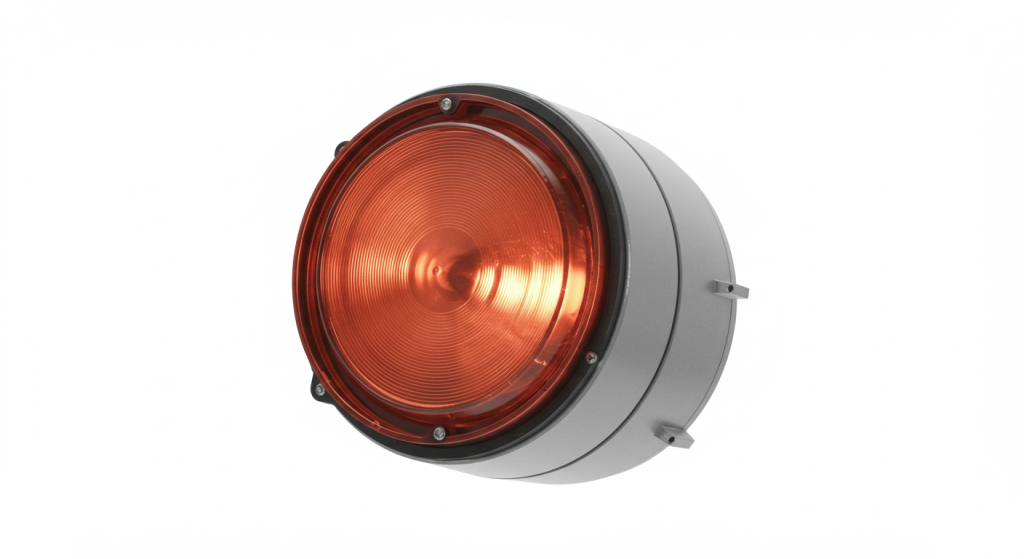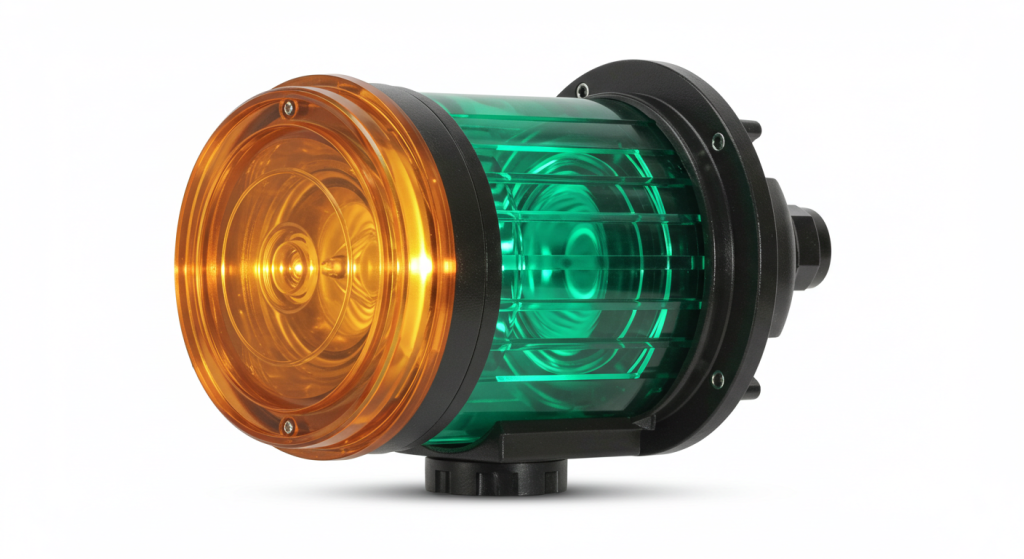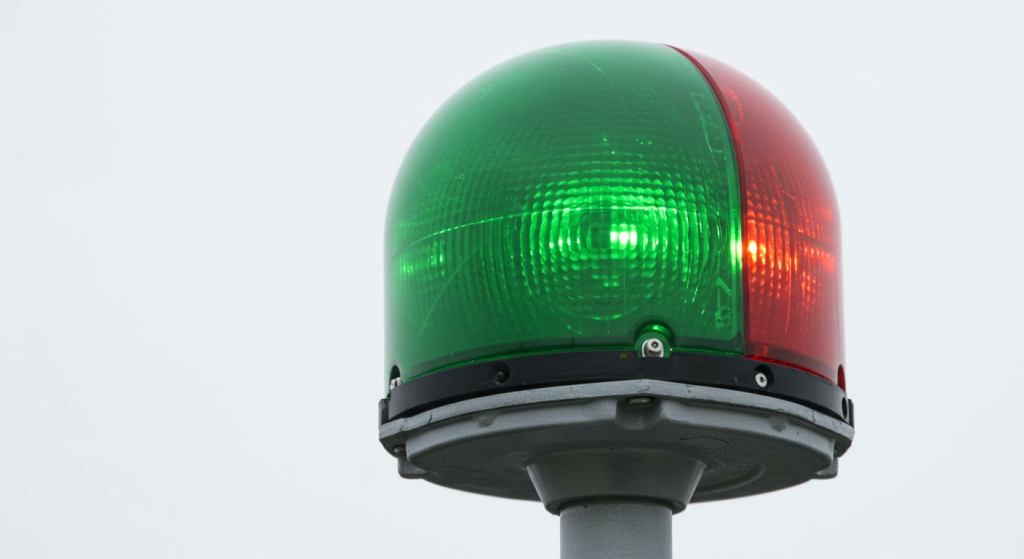How to buy solar obstruction light is a crucial question for anyone needing to mark tall structures for aviation safety. Choosing the right solar obstruction light requires an understanding of various factors, including regulatory requirements, light intensity, and the specific needs of the application. These lights play a critical role in preventing accidents by making towers, buildings, and other structures clearly visible to aircraft, especially at night and in low-visibility conditions. A key component of any solar obstruction light system is the Solar Obstacle Light Controller, which manages the charging and operation of the light. This article will explore the nuances of solar obstruction lighting, offering insights into how to make the best choice for your specific needs.

Understanding the Need for Obstruction Lighting
Before delving into the specifics of how to buy solar obstruction lights, it’s essential to understand why they are so necessary. Obstruction lights are designed to enhance the visibility of tall structures, making them easily identifiable to pilots and air traffic controllers. These lights are a crucial part of aviation safety, helping to prevent collisions with buildings, towers, antennas, and other tall obstacles. In many areas, obstruction lights are not simply a good idea, they are required by law to meet specific safety standards. The implementation of a proper obstruction lighting system can be instrumental in reducing the risk of accidents involving aircraft and it is imperative that a system is implemented correctly.
Solar obstacle light controller
The Solar obstacle light controller is a critical part of any solar powered obstruction lighting system. The controller regulates the power generated by the solar panel, stores it in the battery, and manages the operation of the light source. A good controller has multiple functions that help in ensuring that the light operates reliably and consistently. These controllers will often monitor battery health, prevent overcharging, and manage the intensity and frequency of the light itself. Selecting a system with a reliable and efficient controller is crucial for the effectiveness of the lighting system and its longevity. A good controller will also often include fault detection and reporting, so that any issue with the system can be addressed promptly. This controller is the brain of the solar obstruction light system and is critical to its long term performance.

What is the standard for obstruction light?
What is the standard for obstruction light? Obstruction lights are regulated by various national and international authorities, such as the FAA (Federal Aviation Administration) in the United States. These standards specify the required intensity, color, flash rate, and placement of obstruction lights. The goal is to ensure that all obstruction lights meet a minimum level of safety and provide pilots with reliable visual cues to identify tall structures. The standards also define the required performance during different weather conditions and how long a light system should operate at a minimum. Adhering to these standards is critical for both legal compliance and safety, and it is essential for any person implementing obstruction lights to adhere to the standards set by the governing body. This consistent approach ensures that all obstruction lighting systems will be familiar to any pilot no matter where they are flying. The proper functioning of these lights is very important and their correct implementation is paramount.
How do I choose a solar street light?
While the context here is for obstruction lights, the basic process for How do I choose a solar street light? shares similar considerations. The process starts by determining the specific lighting requirements. You must consider the desired level of brightness, the area that needs to be illuminated, and the operating time required. You need to assess the location’s climate and the amount of sun available, which will influence the sizing of the solar panel and battery. The quality of the solar panel and battery are key factors in the reliability and long-term performance of the lighting system. It’s also important to consider the warranty and customer support offered by the manufacturer. Selecting a solar street light system also includes an evaluation of the controller to ensure that it efficiently manages the operation of the system, and for a system to be reliable, this is a primary component to be considered. Even though this is for street lighting the considerations can help understand more about solar systems for obstruction lights.

What are the FAA requirements for obstruction lighting?
What are the FAA requirements for obstruction lighting? The FAA sets standards for obstruction lighting in the United States through its Advisory Circular (AC) 70/7460-1, “Obstruction Marking and Lighting.” These guidelines specify the types of lights required based on the height and location of a structure, and they also include details about intensity, color, and the flash rates for different lighting systems. For example, shorter structures are often marked with low-intensity red obstruction lights, while taller structures usually require medium or high-intensity white or red lights. The specific location and type of the structure are also factors in determining what type of light to use. Compliance with these regulations is essential for aviation safety and failure to comply can lead to penalties and liabilities. Understanding and adherence to FAA guidelines is vital for all those who work on obstruction lighting projects.
What color lights are used for obstruction lighting?
What color lights are used for obstruction lighting? Generally, red and white are the most common colors for obstruction lighting. Red obstruction lights are typically used for low to medium-intensity systems and are the most recognizable color for the night. White obstruction lights are often used for higher intensity systems and are often used during the day, especially for very tall structures. In some cases, both red and white lights are used in combination, with white lights operating during the day and red lights at night. This combination approach allows for better daytime visibility using the white light, and the recognizable red for nighttime visibility. The color chosen for an obstruction lighting system depends on the height of the structure and the local regulations, which are often based on FAA regulations. Choosing the correct color of obstruction lighting is critical for the overall effectiveness of the lighting system.
How to buy solar obstruction light with battery
When considering How to buy solar obstruction light with battery, it’s important to consider several key factors. The most important component is the battery itself, as it is the system’s energy storage, and a quality battery that can store enough power for reliable overnight operation is needed. The type of battery will impact the price, the performance, the lifespan, and maintenance requirements. Lithium batteries are generally preferred for their performance and lifespan, but lead acid and nickel metal hydride may also be used. The size of the battery is another key consideration, as it must be able to store enough energy to run the obstruction light even during cloudy conditions or extended periods without sunlight. The overall quality and the capacity of the battery will determine how well the system will perform in adverse conditions. Understanding and choosing the correct battery will be a key factor in the long term performance of the system.
OL800 Solar obstruction light
The OL800 Solar obstruction light is a product name that may represent a specific model, but broadly, it represents a type of solar-powered obstruction light designed for medium-intensity applications. Lights of this kind usually offer a specific level of intensity to meet FAA and ICAO requirements. These types of lights often have a robust design capable of withstanding harsh environments and may also have features like remote monitoring and control. The efficiency and dependability of the OL800 class of lights make them an ideal choice for a wide variety of obstruction marking projects, and for those who need to meet strict regulatory requirements. There are some common characteristics for this class of light, which include using LED technology for efficiency and a durable battery to ensure reliable operation. It is still important to review the specifications of the specific product in question, so that your decision can be made with accurate information.
Solar Aviation Obstruction Light
A Solar Aviation Obstruction Light is any solar-powered light specifically designed to mark structures that pose a potential hazard to aviation. These lights are typically used on towers, buildings, wind turbines, and other tall structures to provide a clear warning to pilots. They can be either low, medium, or high intensity and will need to be compliant with national and international aviation regulations. A Solar Aviation Obstruction Light is designed to be efficient, reliable, and durable so that the light can operate for long periods of time with little to no intervention. These lights are a more environmentally friendly alternative to traditional systems, and they also offer cost savings by eliminating the need for running power to the light location. As well, because these systems are self-contained, installation is simplified. This level of simplicity is a key reason why many choose to implement solar aviation obstruction lights.
Red Solar Lights Outdoor
When discussing Red Solar Lights Outdoor, we are often referring to solar-powered obstruction lights that use red LEDs to provide nighttime visibility. These lights are often low to medium-intensity and they are a popular choice for marking a wide variety of structures. The color red is chosen as it is easily recognized as a warning sign and it is easily seen against a dark night sky. A red solar obstruction light system will usually have a high efficiency solar panel, battery, and the lighting controller. These systems are typically very durable and able to operate reliably even during extended periods of bad weather. The low power consumption of LED lights combined with the efficiency of solar panels, creates an energy efficient system that is both reliable and economical. These lights have a wide array of applications, and are a commonly chosen option when implementing a solar obstruction light system.
LED Aviation Obstruction Light
An LED Aviation Obstruction Light utilizes LED technology to provide a highly efficient, reliable, and long lasting lighting solution for marking obstructions. LEDs offer a number of advantages over older lighting technologies, such as incandescent and halogen lights, including lower energy consumption, longer lifespans, and better light output. LED aviation lights are available in various colors and intensities to meet specific regulatory requirements, and are easily controllable. In the long term, LEDs provide a cost effective option for obstruction lighting due to their low maintenance and energy efficiency, and the overall quality and reliability of LED lighting makes it the standard for aviation obstruction lights. The lower power consumption is also a key factor as it reduces the size and cost of the solar system required for the light. This combination of benefits makes the use of LEDs critical in ensuring a reliable obstruction lighting system.
LED obstruction lights
LED obstruction lights have become the standard choice for marking obstacles due to the benefits of LED technology. These lights are not only highly energy efficient, but they also have a very long operating life and produce high quality light output. The lower energy requirements make them ideal for solar-powered systems, and the low maintenance nature of LED’s also contributes to lower long-term costs. LED obstruction lights are also more reliable than older lighting systems, reducing the probability of a system failure and ensuring consistent operation. They also have a very fast switch on time, which is another benefit that makes LED’s the standard for aviation obstruction lights. They are used in a diverse range of applications because of these benefits, and the technology will only get more efficient over time.
L-810 Obstruction Light
The L-810 Obstruction Light is a specific type of obstruction light as defined by the FAA. The L-810 is usually a low-intensity red obstruction light that is used to mark structures that are lower in height. These lights often are used on antennas, poles, and buildings, and will adhere to a specific set of regulations to be FAA compliant. The lights have specific performance specifications including intensity, flash rate, and color accuracy. The FAA requirements also detail the required maintenance and testing frequency that L-810 lights need to adhere to. Because they are usually used for lower structures, the L-810 is a good fit for solar installations and many manufacturers have solar versions. These are some of the most commonly seen lights in the world as their usage is extremely widespread due to their versatility.
RFAA red Obstruction lights
RFAA red Obstruction lights refers to obstruction lights that meet the requirements specified by the Radio Technical Commission for Aeronautics (RTCA) and are certified by the FAA. These lights meet stringent performance and reliability standards, ensuring they perform as needed during use. RFAA red lights are frequently used in areas where reliable lighting is essential. They undergo rigorous testing, so that when the lights are deployed, they can be trusted to perform as needed. This is an important factor, as this can be the difference between a successful and safe outcome versus a tragedy. These lights are designed to last and to ensure the highest level of reliability to keep aviation as safe as possible.
The Importance of a Reliable Solar Obstacle Light Controller
The Solar Obstacle Light Controller, as previously mentioned, is a key element in ensuring that the solar-powered obstruction light system works properly. A high quality controller will include various functions such as solar charging regulation, battery protection, light intensity control, and timer functionality. A reliable solar controller will also have built-in safety mechanisms to prevent damage caused by overcharging or deep discharge of the batteries. Having the correct controller also allows the light system to automatically adapt to different lighting conditions, switching the light on and off automatically, which greatly increases system efficiency. The controller is a critical part of the whole system, and needs to be designed to operate reliably in all environmental conditions. Choosing the correct controller is a key factor in long term performance and reliability.
Factors to Consider When Purchasing a Solar Obstruction Light
When purchasing a solar obstruction light, many factors need to be considered to ensure you select the appropriate system. The height of the structure and its location will determine the required intensity and type of light. The climate conditions at the location are another important factor, as solar systems have to withstand varying temperatures, rain, and snow. The battery must be sufficient for the location’s specific weather and usage conditions. The system’s controller must also be reliable and must manage the overall performance of the system. Finally, the reliability of the manufacturer must be considered, as quality, support, and warranties are important for the long-term performance of any lighting system. A thorough evaluation of these components is needed before making a final decision.
Installation and Maintenance of Solar Obstruction Lights
Proper installation of a solar obstruction light is essential to make sure that the system performs at its best. A good installation will include correct mounting of the solar panel, making sure that it gets adequate sun exposure, and a safe and secure installation of all electrical components. After installation, regular maintenance is essential. This involves periodic cleaning of the solar panels, inspection of the batteries, and checking all connections. Regular testing of the light itself is also required to ensure that it meets all performance standards. Proper maintenance is necessary to keep the system operating reliably and consistently, so that it performs effectively for its intended purpose. The process of installation should always be done by qualified professionals, and the system should be regularly tested to ensure that it meets all performance requirements.
Conclusion
In conclusion, understanding How to buy solar obstruction light involves a thorough assessment of regulatory requirements, technical specifications, and environmental considerations. A solar-powered obstruction light is a practical and cost-effective solution for marking tall structures, providing high reliability and low operating costs. The Solar Obstacle Light Controller is a critical component of such systems, ensuring proper charging and operation. When choosing any system, you should ensure that the selected system complies with all local aviation standards and has been designed for the environment in which it will be deployed. With the right system, tall structures can be made more visible to pilots, which will lead to a reduction of potential accidents and contribute to the safety of aviation. By ensuring the correct installation and ongoing maintenance, a solar obstruction lighting system will provide years of reliable and safe service.
Hopefully this article has helped you better understand the nuances of purchasing a solar obstruction lighting system. This is an important aspect of aviation and a reliable system is necessary for aviation safety.